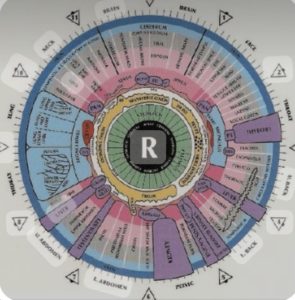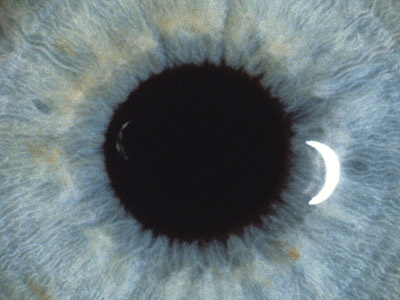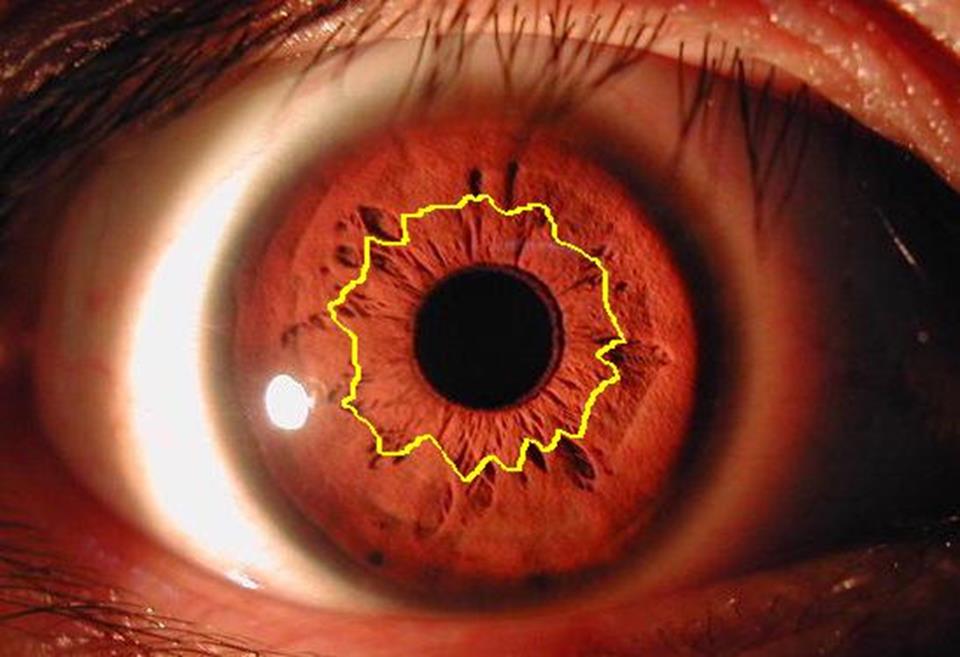Address
6050 N 9th Ave Suite D Pensacola FL 32504
Work Hours
Mon: 10am – 6pm
Tues: 10am – 6pm
Wed : 9am – 4pm
Thurs: 9am – 12pm
Fri - Sat- Sun: Closed
Address
6050 N 9th Ave Suite D Pensacola FL 32504
Work Hours
Mon: 10am – 6pm
Tues: 10am – 6pm
Wed : 9am – 4pm
Thurs: 9am – 12pm
Fri - Sat- Sun: Closed

In the realm of holistic health and alternative medicine, there are many practices that aim to complement and enhance traditional medical approaches. One such practice is iridology, which involves studying the iris of the eye to gain insight into an individual’s overall health. At Emerald Coast Holistic Health, owned and operated by certified iridologist and natural health advisor Holly Gibson, the focus is on providing personalized health consultations that address specific concerns and offer preventative measures for overall well-being. With a passion for helping others feel their best, Holly aims to bridge the gap between traditional medicine and alternative modalities by offering a comprehensive approach to health and wellness.

This image is property of achs.edu.
Welcome to this comprehensive article on how iridology complements traditional medicine. If you’re curious about alternative methods of healthcare and holistic approaches to wellness, then iridology might pique your interest. In this article, we will delve into the definition, history, and basic principles of iridology. We will explore the benefits of using iridology as a non-invasive and painless tool for early detection of health issues. Additionally, we will discuss how iridology can complement traditional diagnosis and integrate with Western medicine, ultimately improving patient care and diagnostic accuracy. Real-life examples, criticism and limitations, research and evidence, and training and certification will also be explored. So, let’s dive in and discover the fascinating world of iridology!
Iridology, also known as iris analysis, is an alternative medical practice that involves examining the patterns, colors, and other characteristics of the iris in order to gain insight into a person’s overall health. According to iridology, different regions of the iris correspond to specific organs and body systems. By assessing the markings and signs in the iris, iridologists believe they can identify potential health issues and imbalances within the body.
The practice of iridology dates back thousands of years and can be traced to ancient civilizations such as the Egyptians and the Chinese. However, modern iridology as we know it today was developed in the 19th century by a Hungarian physician named Ignaz von Peczely. Dr. von Peczely observed changes in the eyes of his patients after they suffered injuries and noticed distinct patterns in the iris that corresponded to the affected body parts. His observations laid the foundation for the modern practice of iridology.
Iridology is based on the belief that the iris, which is the colored part of the eye, is connected to every organ and tissue in the body through the nervous system. Changes in the iris are thought to reflect changes in the corresponding organs and body systems. Iridologists use specialized tools, such as magnifying lenses and cameras, to examine the iris in detail and identify various signs, such as discolorations, lesions, and patterns. These signs are then interpreted to gain insight into a person’s overall health and potential imbalances.
One of the major benefits of iridology is that it is a non-invasive and painless diagnostic tool. Unlike other medical procedures that may involve needles, scans, or uncomfortable physical examinations, iridology simply involves analyzing the iris of the eye. This makes it a suitable option for individuals who may be hesitant or fearful of more invasive procedures.
Iridology takes a holistic approach to wellness, considering the person as a whole rather than focusing solely on isolated symptoms or conditions. By examining the iris, iridologists aim to identify underlying causes of health issues and imbalances, taking into account factors such as genetics, lifestyle, and emotional well-being. This holistic perspective allows for a more comprehensive understanding of a person’s health and can guide personalized treatment plans.
One of the key advantages of iridology is its potential for early detection of health issues. By analyzing the iris, iridologists may be able to identify signs of organ dysfunction or imbalances before symptoms manifest or become more severe. Early detection allows for interventions and lifestyle adjustments that may prevent the progression of a condition and promote overall well-being.
Iridology is not intended to replace traditional medical diagnosis or treatment. Instead, it can be viewed as a complementary tool that can provide additional insights into a person’s health and support existing medical approaches. By working hand-in-hand with other modalities, such as Western medicine, herbal medicine, or acupuncture, iridology can contribute to a more comprehensive and personalized approach to healthcare.
Visual examination of the iris is a key component of iridology. Iridologists analyze the iris for signs such as discolorations, markings, patterns, and irregularities. These observations are then compared to iridology charts and maps that associate specific regions of the iris with corresponding organs and body systems. This visual analysis provides valuable information that can aid in the identification of potential health issues.
Through the examination of the iris, iridologists can assess a person’s overall health and well-being. They consider factors such as organ function, circulation, lymphatic system, and emotional state. This comprehensive health assessment allows iridologists to identify potential imbalances, weaknesses, or areas of concern within the body, guiding further investigations and treatment plans.
Iridology can provide valuable information that can assist healthcare practitioners in developing personalized treatment plans. By understanding the underlying causes and imbalances identified through iridology, practitioners can recommend specific dietary changes, lifestyle modifications, and targeted therapies that address the root causes of health issues. This integrated approach can enhance the effectiveness of treatment and promote overall well-being.

This image is property of planetwellness.co.uk.
Integration of iridology with Western medicine involves collaboration and communication between iridologists and other healthcare professionals. By sharing information and insights, practitioners can work together to provide the best possible care for the patient. This collaborative approach can lead to improved patient outcomes and a more holistic perspective on health.
Integrating iridology with Western medicine can enhance patient care. The additional information gained from iridology can assist in identifying early warning signs, monitoring progress, and adjusting treatment plans. This leads to more informed decision-making and a more comprehensive approach to patient care.
By incorporating iridology into traditional medical diagnosis, healthcare practitioners may achieve improved diagnostic accuracy. The signs and markings observed in the iris can provide important clues about a person’s health and potential imbalances. When used alongside other diagnostic tools and methods, iridology can contribute to a more accurate and complete understanding of a person’s health.
A 35-year-old woman presents with chronic digestive issues, including bloating, abdominal pain, and irregular bowel movements. After a detailed consultation, an iridologist examines her iris and notices signs of congestion and inflammation in the corresponding regions associated with the digestive system. This observation aligns with the woman’s reported symptoms and supports the diagnosis of digestive issues. The iridologist collaborates with the woman’s gastroenterologist, providing additional insights that help guide treatment recommendations.
A 45-year-old man complains of fatigue, hair loss, and brittle nails. His diet consists mostly of processed foods and lacks essential nutrients. During an iridology assessment, the practitioner observes signs in the iris that indicate potential nutritional deficiencies. The iridologist recommends a comprehensive blood test to confirm the deficiencies and collaborates with a nutritionist to develop a personalized dietary plan that addresses the man’s specific needs.
A 60-year-old woman with a history of autoimmune disease seeks support in managing her condition. Through iridology, her practitioner identifies signs of inflammation and stress in the corresponding regions of the iris. This information allows for a more targeted approach to her treatment plan, incorporating stress reduction techniques, dietary modifications, and appropriate supplements. The iridologist collaborates with her rheumatologist to ensure a cohesive and integrated approach to her healthcare.

This image is property of essentialoils.co.za.
One of the main criticisms of iridology is the lack of scientific evidence supporting its effectiveness. Although there are anecdotal reports and case studies supporting the practice, further research and large-scale studies are needed to validate its claims. Critics argue that iridology may rely on subjective interpretation and lacks rigorous scientific validation.
Interpreting the signs and markings in the iris can be subjective and open to individual interpretation. Different iridologists may reach different conclusions based on their own knowledge and experience. This potential for misinterpretation raises concerns about the reliability and consistency of iridology as a diagnostic tool.
It is important to note that iridology should not be used as a standalone diagnostic tool. While it can provide valuable insights into a person’s health, it should be integrated with other diagnostic methods and tools. By combining iridology with traditional medical diagnosis, practitioners can ensure a comprehensive and evidence-based approach to healthcare.
Ongoing research is being conducted to evaluate the effectiveness and validity of iridology as a diagnostic tool. Some studies have focused on specific health conditions, such as diabetes or cardiovascular disease, while others have explored the overall accuracy and reliability of iridology. Although the results of these studies are varied, they contribute to the growing body of knowledge surrounding iridology.
While the scientific evidence supporting iridology is still limited, proponents argue that it can provide valuable insights into a person’s health and potential imbalances. They assert that when used in conjunction with other diagnostic tools, iridology can enhance the accuracy of diagnosis and guide more targeted treatment plans. Further research is needed to validate these claims and establish iridology as a recognized diagnostic modality.

This image is property of 3.bp.blogspot.com.
To become an iridology practitioner, individuals typically undergo specialized training and certification. The specific requirements may vary depending on the country or organization offering the certification. Generally, practitioners are required to complete a comprehensive training program that covers the principles and techniques of iridology. They must also pass an examination to demonstrate their knowledge and proficiency in the field.
Several organizations offer accredited training programs for individuals interested in pursuing a career in iridology. These programs typically include both theoretical and practical components, covering topics such as iris anatomy and interpretation, diagnostic techniques, and case studies. By completing an accredited training program, individuals can acquire the necessary skills and knowledge to become certified iridologists.
In conclusion, iridology offers a unique perspective on healthcare by examining the patterns and characteristics of the iris to gain insight into a person’s overall health and potential imbalances. While it is important to acknowledge the criticism and limitations of iridology, many individuals have found value in its holistic approach and its potential for early detection of health issues. By integrating iridology with traditional medical diagnosis, healthcare practitioners can enhance patient care and improve diagnostic accuracy. Ongoing research and evidence-based studies will continue to shed light on the effectiveness and validity of iridology as a complementary diagnostic tool. If you’re interested in exploring iridology further, consider consulting with a certified iridologist who can guide you on your journey towards improved health and well-being.